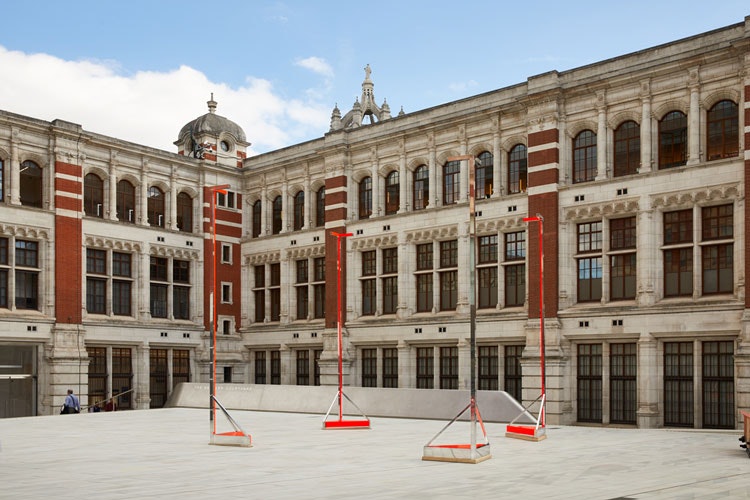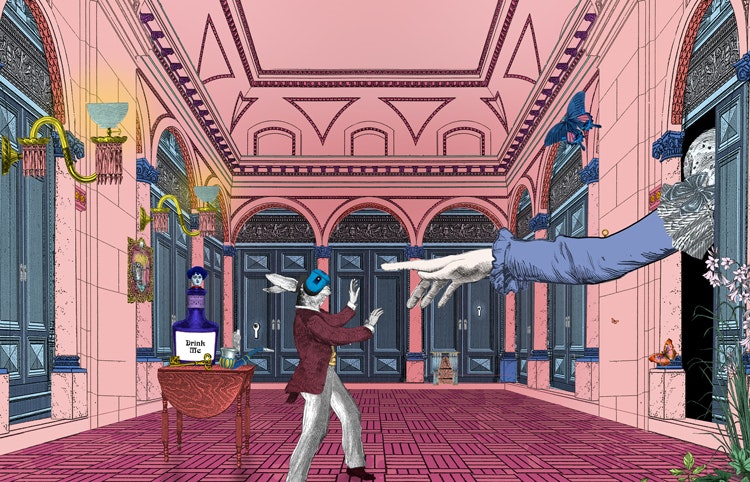“It could kickstart a revolution”: exhibition design post-Covid

How would the badly-hit exhibition sector return after the first lockdown? The Design Museum’s headline exhibition, Electronic: From Kraftwerk to The Chemical Brothers, had been set up before lockdown and its organisers revealed to Design Week how it had been adjusted accordingly. As well as mandatory masks and hand sanitiser stations, bike capacity had been doubled so that people would not have to take public transport and the capacity was halved (the museum had to open late to cover a shortfall in ticket sales).
Beyond the immediate changes, we wondered how exhibition design might change in the long term. Nissen Richards studio director Pippa Nissen told Design Week that Covid could kickstart a “revolution for digital” at exhibition spaces with the rise of Augmented Reality (AR) and Virtual Reality (VR). She also noted that there could be a move to an (even more) more curated experience, prompted by how people might feel differently about enclosed spaces. Future exhibitions could be about “experiencing somebody’s pre-thought curated experience” with fewer choices on the visitor’s part.
Materials would be another focus. “We can’t be as wasteful anymore,” Nissen said. Not only would materials have to be more sustainable but there’d have to be more adaptable (for changing social-distancing rules and future projects). That was a trend picked up at Milan’s Salone Del Mobile – whose preview we attended just before lockdown and its eventual postponement – where there was a focus on reusable exhibition displays.
Electronic: from Kraftwerk to The Chemical Brothers

When it did finally open, Design Week attended a relatively quiet preview for the Design Museum’s blockbuster exhibition on the history of electronic music. A transfer from Paris, Electronic: From Kraftwerk to The Chemical Brothers took visitors from the start of the 20th century and the “mad scientists of sound” through to Chicago’s house scene and also Manchester where Ben Kelly and Peter Saville’s graphic work for the Haçienda club is displayed.
Perhaps most striking in the exhibition were the three light and sound installation which would have been particularly well-received by any visitors missing the city’s shuttered club scene. Kraftwerk’s 3D experience was akin to a high-concept music video, displaying music from the band’s eight albums. 1024 archictecture’s large-scale moving light display was set to French DJ Laurent Garnier’s soundtrack.
The final room belonged to Got to Keep On, a 2019 piece from the Chemical Brothers and show designers Smith & Lyall. The room boasted strobe light and smoke effects and 3D shape-shifting visuals. It encapsulated what Smith & Lyall called the “transformative power of music, art and design”.
Museums and galleries improve online accessibility as lockdown continues

As with many sectors, the focus for museum and galleries this year was digital. When people could not go out, the best way was to reach them was at home. In the spring, the British Museum launched what it called one of the “most expansive online museum collection databases” in the world. Some 4 million objects were made available to view online. Curation was not done away with, however. Themes were launched in conjunction with the displays, such as Love and Identity, which sought to provide a curated experience for people, the ‘s museum digital programme manager Michael Tame told us.
Throughout the sector, efforts were made to improve online accessibility over lockdown. The Royal Academy created a 38-minute online tour of its Picasso and Paper exhibition, for example. It was not unprecedented – Google has previously helped institutions like London’s National Gallery and New York’s Metropolitan Museum of Art create virtual visits – but there was greater impetus now.
AR platform Acute Art – interviewed by Design Week at the start of the year – also expanded its offering with a new app which put users in the position of exhibition curator. Designed in-house, the app uses phone cameras to place installations in people’s homes. It was accompanied by some big-name collaborators: Jeff Koons, Marina Abramovic and Ai Weiwei.
Architecture for Dogs: Designing for a world “built on a canine scale”

Man’s best friend was the focus of a design-led exhibition at London’s Japan House this summer. “The approach of human engineering is a vision of environment creation which uses the human body was its yardstick,” Japan House chief creative advisor Hara Kenya told us. “However look at a little dog next to its owner, and you begin to see the potential for a new type of architecture.”
16 architects and designers from around the world produced work for the playful exhibition, attracting the likes of Japanese architect Kengo Kuma. Among the collection of beds, toys and activities was a poodle-specific piece from German industrial designer Konstantin Grcic. Paramount was a mirrored structure which aimed to pleased the breed which is known for liking its own reflection.
Japanese architect Kazuyo Sejima took inspiration for the characteristics of his subject itself. Mimicing the Bichon Frise’s fluffy coat, he created a “candy floss cocoon” where the breed could relax in comfort and style.
V&A conjures “warped” universe of Alice in Wonderland in virtual reality

The V&A’s headline Alice in Wonderland exhibition was supposed to take open its doors this summer. When the exhibition was delayed until next year, the museum turned to London-based games studio Preloaded to create VR set pieces for those eager to visit Lewis Carroll’s fantastical world.
While the original plan was to have a 4-minute experience at the exhibition itself, this ambition grew during lockdown to an at-home VR experience. The studio also developed a setpiece for the exhibition preview in October. The experience took people into the Queen of Hearts’ garden and the Hall of Doors, incorporating visual tricks – such as shifting scale – throughout. The world was made up of brightly-coloured hand-drawn visuals, with illustrations from Icelandic artist Kristjana S. Williams.
VR opens up possiblities for the exhibition experience, Preloaded associate creative director Jon Caplin told us. “Not being held back by the physical world means you can change the environment completely, in colour and scale,” he added, while also pointing out that it could be experienced from the comfort of people’s bedrooms. In socially-distanced times, this could be a useful path for museums and galleries to explore – though it does of course mean investing in a VR headset, Caplin added.

- Design disciplines in this article
- Industries in this article
- Brands in this article







